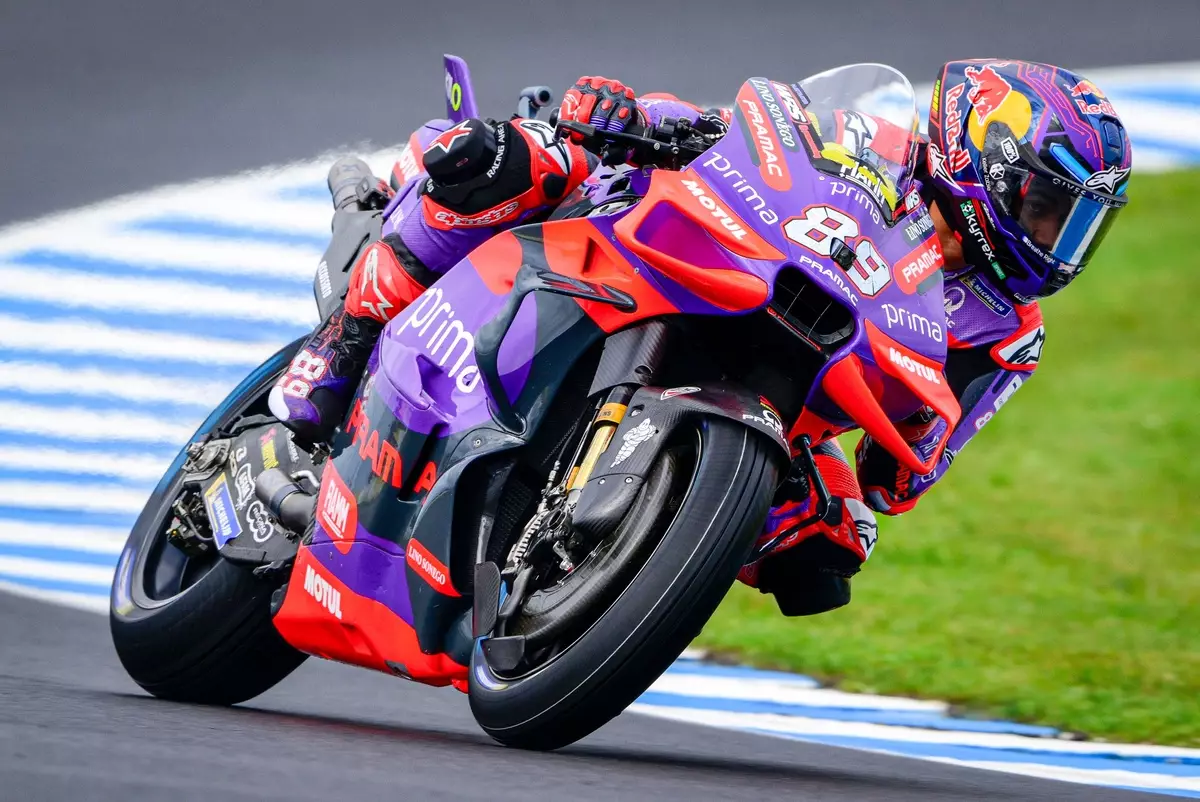The anticipation surrounding the Australian Grand Prix at Phillip Island reached fever pitch on Saturday as Pramac Ducati’s Jorge Martin delivered a stunning performance to clinch pole position. His achievement not only underscored his prowess on the track but also showcased the intricacies of the qualifying session’s dynamics. This article aims to delve into the details of the qualifying rounds, examining the performances of key riders as well as the overall implications for the championship.
Martin’s path to pole was not entirely smooth. After an early mishap on his first flying lap at Lukey Heights, where he was forced to abort, there were questions about his ability to secure a front-row start. However, Martin quickly dispelled any doubts on his subsequent lap. With four red sectors recorded, he set a scorching time of 1m27.296s—just shy of his own lap record from the previous year. This performance was not only an indication of his skill but also a strategic execution of timing and pace that has characterized his season. Such a dominant lap leading up to the race serves as a strong psychological advantage, placing him in a commanding position against his rivals.
Marc Marquez, riding for Gresini Ducati, managed to qualify second with a respectable time, firmly confirming his earlier prediction about Martin’s qualifying prowess. As an eight-time champion, Marquez’s experience allows him to maintain competitive times even as he navigates through various challenges. His confidence and ability to push himself demonstrate both resilience and a keen understanding of race strategy. Meanwhile, Francesco Bagnaia, who is normally seen as Martin’s closest title competitor, qualified fifth—a concerning position for him ahead of the sprint race and the grand prix. This discrepancy raises questions about Bagnaia’s performance and strategy moving forward in the championship.
Maverick Vinales, racing for Aprilia, also showcased his potential by replicating his front-row start from the previous race in Japan. His lap time was established before he attempted a final push with fresh tires, adding another layer to the narrative of competitive strategy. Vinales expressed some frustration over traffic during his qualifying lap, indicating that despite his strong performance, the potential for an even better time was hindered. This nuance reveals the complexities within qualifying sessions, where external factors can significantly impact a rider’s performance.
The results saw Marco Bezzecchi record the fourth-fastest lap, maintaining consistency from his Friday performances. Meanwhile, Raul Fernandez (Trackhouse Racing) managed to secure a spot on the second row after advancing through Q1—a commendable feat that suggests promising potential as underdog competitors can often surprise throughout the race.
Notably, the track conditions played a pivotal role leading up to qualifying. The morning’s FP2 session was characterized by damp surfaces, yet gradually improved, allowing riders to adapt their strategies. This transition from wet to dry set the stage for some riders to seize the advantage during qualifying. Timing became crucial as racers aimed to maximize their laps within the optimal conditions. The battle for Q2 qualifications highlighted this aspect, with Pedro Acosta’s late surge pushed him later down the grid, causing him to qualify 15th, a disappointing outcome after an encouraging morning.
Oh, and let’s not forget the incident involving Jack Miller, an audience favorite, who hit an animal on track, leading to a less desirable 16th place start. Such unpredictable occurrences add an additional layer of complexity to the race weekend, affecting not just the riders’ mental states but potentially their performances as well.
As the dust from qualifying settles, all eyes will now be on the sprint race and the main event. With Martin’s commanding pole position, questions loom over how the dynamics of the race will play out. The interplay between tire management, track position, and the strategies employed by riders like Marquez and Bagnaia will be critical. As we prepare for the races ahead, it is clear that the 2023 Australian Grand Prix promises to be a thrilling chapter in this competitive season, full of twists, tactics, and perhaps, unexpected turnarounds. The stage has been set, and the riders are ready—let the races begin!


Leave a Reply